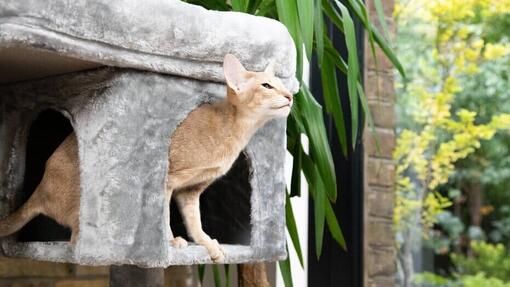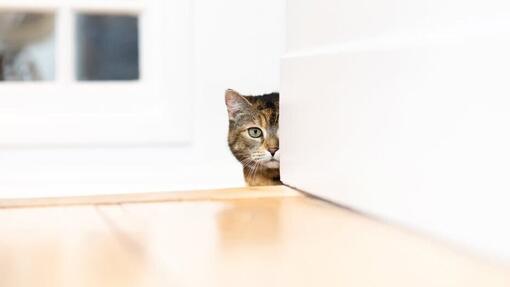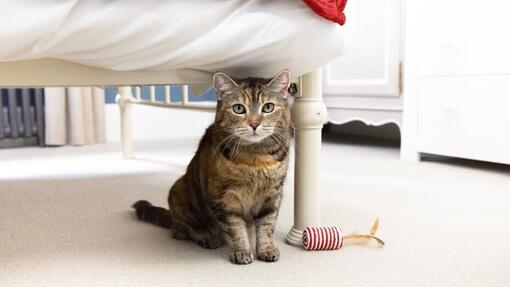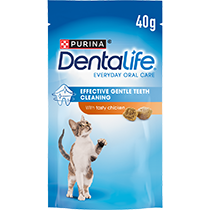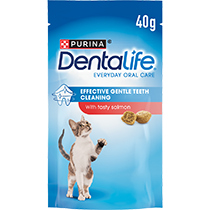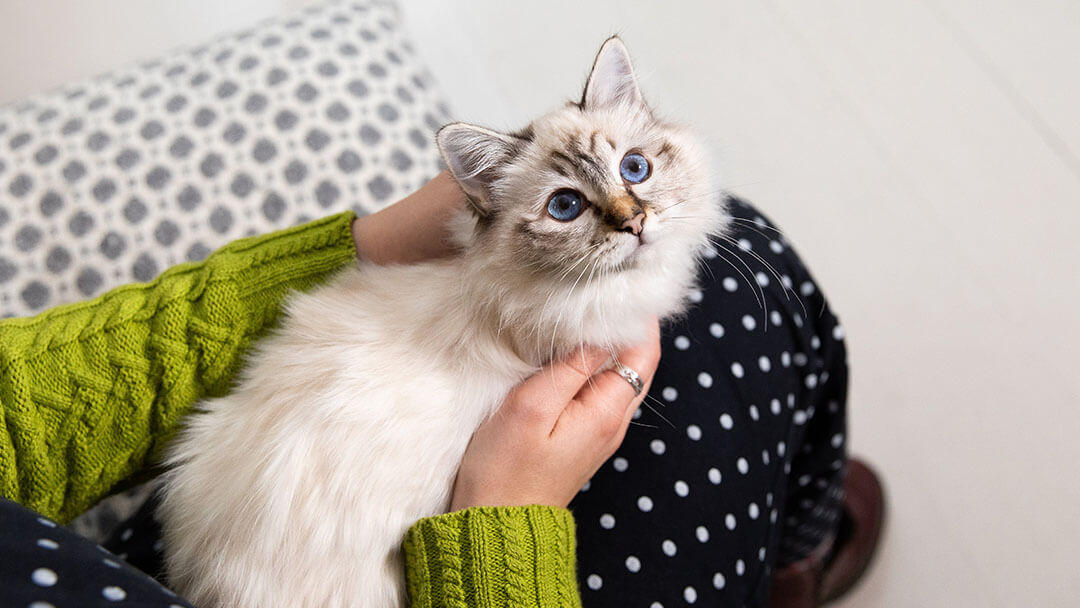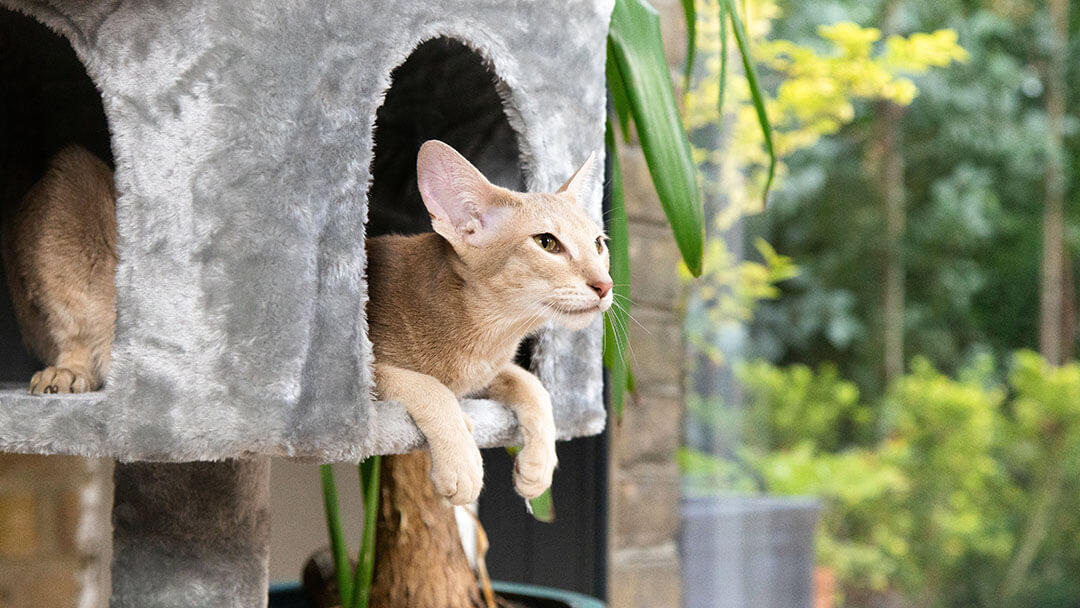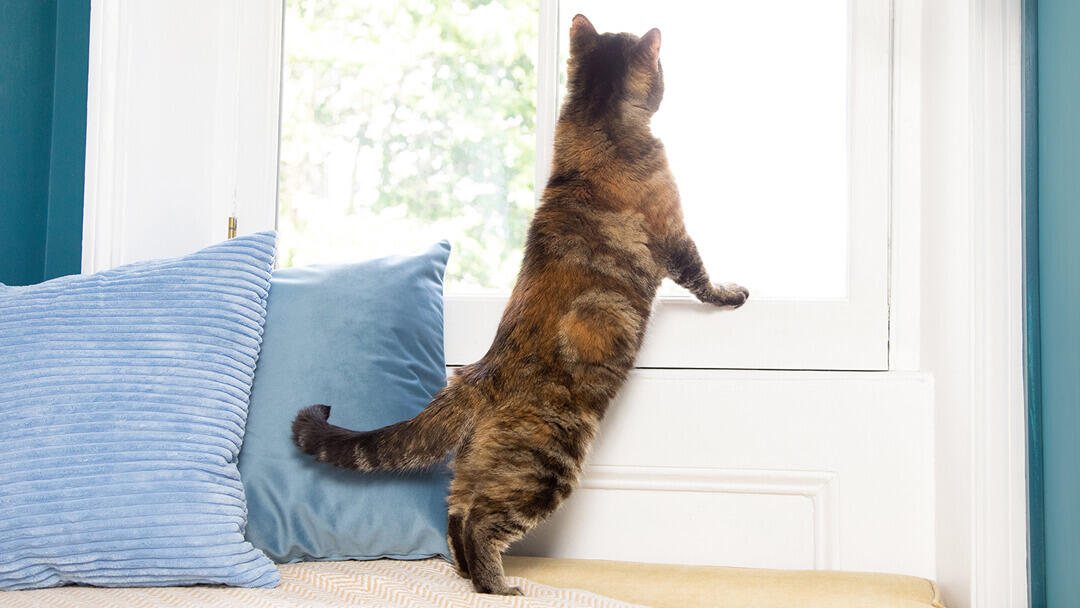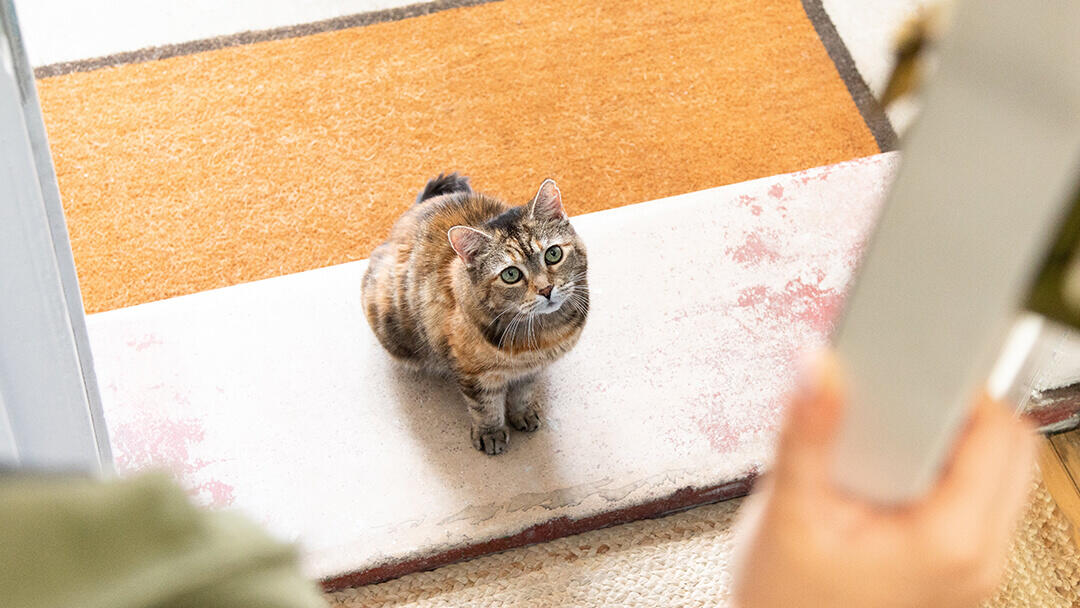
Cats may love nothing better than curling up for a snooze in a small box, but they can also like to purr the day away from the top level of a cat tree. Some kittens live comfortably in tiny apartments in urban centres, while others quickly adapt to life in wide, open areas in the countryside.
So how much space do cats really need to thrive? The answer depends on the cat’s size, age, activity levels and also the layout of the house. But with proper care, some cats will learn to live happily in almost any space configuration.
How much space do cats need?
There is no definite rule for how much room cats need to feel comfortable. In general, an area of about 20 square feet scattered throughout the various rooms in the house can be considered an absolute minimum amount of space for a cat.
Here are a few factors that you will need to consider when deciding if there is enough room in your home for a new feline family member.
Breed size
Every cat has their own needs, and this becomes most obvious when we take size into consideration. Larger felines such as the Maine Coon will need more square feet than the smaller Devon Rex.
Age
Younger cats will need more ‘territory’ to explore and make their own than felines in their golden years. Older cats tend to prefer staying closer to home comforts such as their food bowl and litter tray. So, take the life stage of your cat into consideration when deciding how much space your pet will need.
Energy level
High-energy cats such as the Abyssinian or the Savannah will keep you on your toes from the moment they come home until long into their old age. Give them plenty of room to hide, climb and chase and you’ll have a happy companion. On the other hand, if you are considering a more laid-back breed such as the Persian or Ragdoll, their space requirements are often less demanding.
As long as their favourite spot is free, they will happily sit there for hours watching the world go by. It’s not just about the breed though, as all cats will have their individual personalities and some will be more suited to a larger space than others.
House layout
When it comes to cats, it is more about the type of space they get than the number of square feet. Vertical space for climbing is as important as floor space and you need to reserve room for hiding spots too. Remember that it is a good idea to keep the food bowl well away from the litter tray - there has to be enough space between the two to meet high feline standards!
How much space do indoor cats need?
Indoor cats like to have a few spots up high from which to observe all the action going on in the household. This can be a window sill, a book shelf or their own cat tower.
Cats will often want to stay away from the hustle and bustle of the house and have some peace and quiet in a place they consider ‘hidden’, so provide them with ample opportunities for having their own space. Hiding places can be as simple as a box in a quiet corner, a hidey-hole under the bed, or a comfy cushion in the spare room.
How much space do outdoor cats need?
Some outdoor cats are comfortable venturing out into the wide open, while others like to stick near their home and prefer to spend time in the garden. There is no rule for how much outdoor space a cat truly needs, but high spots and hiding places are on the wish list of outdoor cats too.
Make sure they have a shelter in the garden to get shade from strong sunlight as well as protection from heavy rain.
Should you give your cat the spare room?
If you have a spare room in your home, this can be put to good use by turning it into a space dedicated to the four-legged family member. Cats like their privacy, so chances are your pet will truly appreciate having their own space where they can sneak off to rest, eat or play.
How to tell if your cat requires more space?
Sometimes cats themselves will offer you their opinion on the amount of space they have available. Look out for signs of discomfort with the current space configuration. These may include running outside whenever the door is open and looking for spaces to hide behind the furniture or inside boxes.
Even certain types of aggressive behaviour in cats can be the result of accommodation issues.
Consider moving some pieces of furniture to offer more space to your cat. Create more vertical space by investing in a cat tree or re-arranging furniture so they can easily climb on window sills or shelves.
Next, find out more about cat scratching posts and how they can help you add more space for your pet even in smaller rooms.



